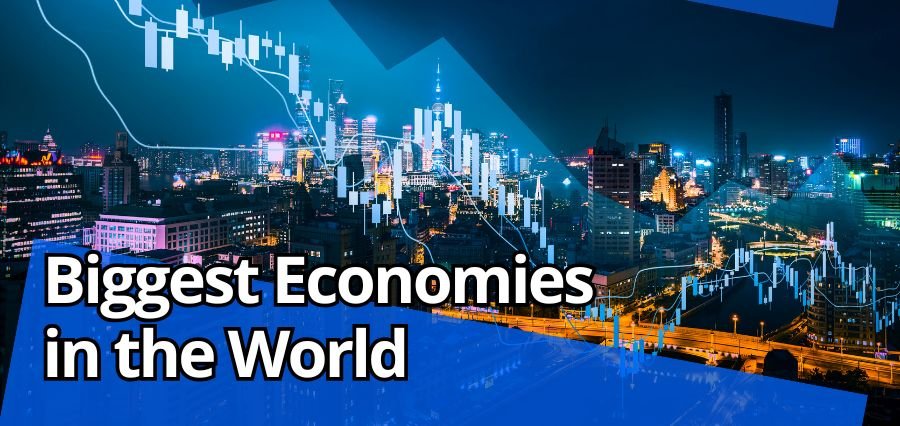Biggest Economies in the World: 2025 Growth Trends and Shifts
The biggest economies in the world are more than theoretical statistical rankings—they’re living breaths influencing global policy, trade balances, and innovation trends. As we navigate 2025, these economies aren’t merely growing but transforming at a record clip. Whether it’s technological revolutions, energy shifts, or geopolitical reorientations, the economic behemoths of the world are shifting with aplomb and seriousness.
Looking at the make-up and trajectory of the “biggest economies of the world” informs us of where the world is going. From the dominant leadership of the United States to the breakneck speed of China, and the technological prowess of Japan’s tenacity, the race to be number one is as complicated as it is meaningful.
Why 2025 Is a Turning Point for the Biggest Economies in the World
2025 is a milestone year for economic rebalancing. Several of the world’s largest economies are reconfiguring their economic models. The post-pandemic recovery, climate goals, artificial intelligence adoption, and reorganizing global supply chains are compelling economies to reconsider their conventional growth drivers. The United States, the leader, is heavily investing in semiconductors, defense research, and renewable energy. At the same time, China, exercising its quasi-equal status, is reaffirming itself on electric cars, global infrastructure, and artificial intelligence.
The biggest economies of Europe, including Germany, France, and the United Kingdom, are vying for a balance between green transformation and productivity. They are adamant to remain among the biggest economies in the world amid the unfavorable demographics perspective and slowdown in industrial speed.
Changing Policies and the Future of the Biggest Economies in the World
Global monetary policy in 2025 is experiencing seismic changes. Normalization of interest rates, management of inflation, and debt restructuring are becoming the hallmark of ensuring economic stability. India and Brazil, what were previously considered to be emerging economies, are now being spoken of in the same context as the conventional biggest economies in the world. Their emphasis on digital infrastructure and manufacturing incentives places them at the epicenter in the decade to come.
As economic policies change, trade blocs also change. The Indo-Pacific is a new axis of trade emerging and drawing economic gravity east. The economic story is no longer simply about the West. Rather, it’s being re-told in a broader, more integrated paradigm of the biggest economies in the world.
How Innovation is Redefining the Biggest Economies in the World
Innovation is no longer a choice—it’s reality. The world’s largest economies are betting serious money on innovation as part of GDP growth strategy. Artificial intelligence, biotech, clean energy, and quantum computing are the new currencies of influence. The United States and China are in a contest to capture technology dominance but other countries such as South Korea, Germany, and Japan are investing strategically in niche-tech sectors.
India’s fintech and digital governance journey has also been observed across the globe. Its efforts towards becoming a $5 trillion economy are being facilitated by an expanding middle class, startups, and digital public infrastructure. All of these are contributing to the dynamism altering the biggest economies in the world list.
Sustainability Commitments of the Biggest Economies in the World
Sustainability is also a major differentiator in 2025. The world’s largest economies are now not only being measured by their GDP but also by how much they love the planet. The European Union has aggressive decarbonization goals, and the U.S. Inflation Reduction Act is investing billions in clean tech and carbon-neutral technologies. China, while still the world’s largest emitter, is also the largest solar and wind investor. These are green and strategic initiatives—setting global energy dependency trends and emerging patterns of trade.
Every country like Australia and Canada, traditionally resource-based economies, are relying on nature to their strengths and transforming into cleaner paradigms. That equilibrium must continue being part of the biggest economies in the world without compromising on long-term sustainability.
Geopolitics and Strategic Location of the Biggest Economies of the World
Geopolitical policy is inextricably linked with economic power. In 2025, the world’s largest economies are not just fighting inflation or unemployment—they’re juggling alliances, sanctions, and strategic dependencies. The US-China rivalry over Taiwan, Europe’s realignment post-Brexit and Ukraine, and the new BRICS expansion strategy are all illustrations of how politics and economics cannot be separated.
New trade blocs, cryptocurrency experiments, and bilateral investment treaties are being wielded as economic statecraft tools. The Gulf states, and most prominently Saudi Arabia and the UAE, while not usually in the top five, are remaking their regional leadership by investing in clean energy and innovation. These steps herald a world where the biggest economies in the world list is less certain and more strategic than rigid.
Conclusion: Reimagining the Definition of the Biggest Economies in the World
The term biggest economies in the world is no longer monolithic or fixed. It’s multipolar, multidimensional, and dynamic. Former giants such as the U.S., China, Japan, and Germany are accompanied by nimble, high-tech nations such as India, South Korea, and Brazil. Those up-and-comers aren’t in need of affirmation; they’re forging their own greats and doers.
Economic power by 2025 isn’t GDP—rather, it’s resilience, innovation, sustainability, and visionary thinking. The world’s largest economies aren’t simply ruling—they are reimagining, retransforming, and rewriting the very meaning of “really powerful” in a post-globalized future.
Read More: Positive Thinking Abdul Kalam Quotes for Success in 2025

